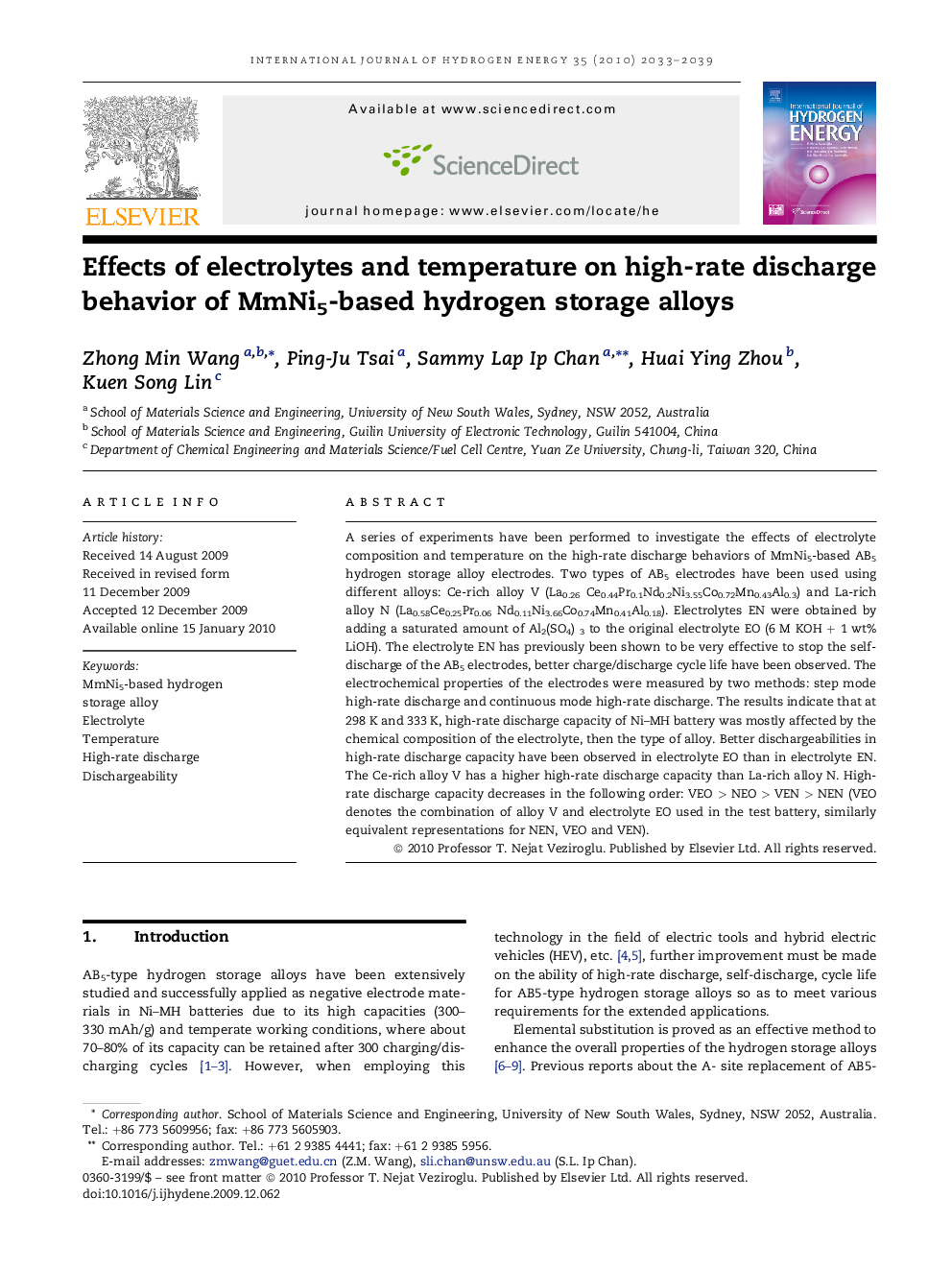| Article ID | Journal | Published Year | Pages | File Type |
|---|---|---|---|---|
| 1280909 | International Journal of Hydrogen Energy | 2010 | 7 Pages |
A series of experiments have been performed to investigate the effects of electrolyte composition and temperature on the high-rate discharge behaviors of MmNi5-based AB5 hydrogen storage alloy electrodes. Two types of AB5 electrodes have been used using different alloys: Ce-rich alloy V (La0.26 Ce0.44Pr0.1Nd0.2Ni3.55Co0.72Mn0.43Al0.3) and La-rich alloy N (La0.58Ce0.25Pr0.06 Nd0.11Ni3.66Co0.74Mn0.41Al0.18). Electrolytes EN were obtained by adding a saturated amount of Al2(SO4) 3 to the original electrolyte EO (6 M KOH + 1 wt% LiOH). The electrolyte EN has previously been shown to be very effective to stop the self-discharge of the AB5 electrodes, better charge/discharge cycle life have been observed. The electrochemical properties of the electrodes were measured by two methods: step mode high-rate discharge and continuous mode high-rate discharge. The results indicate that at 298 K and 333 K, high-rate discharge capacity of Ni–MH battery was mostly affected by the chemical composition of the electrolyte, then the type of alloy. Better dischargeabilities in high-rate discharge capacity have been observed in electrolyte EO than in electrolyte EN. The Ce-rich alloy V has a higher high-rate discharge capacity than La-rich alloy N. High-rate discharge capacity decreases in the following order: VEO > NEO > VEN > NEN (VEO denotes the combination of alloy V and electrolyte EO used in the test battery, similarly equivalent representations for NEN, VEO and VEN).
